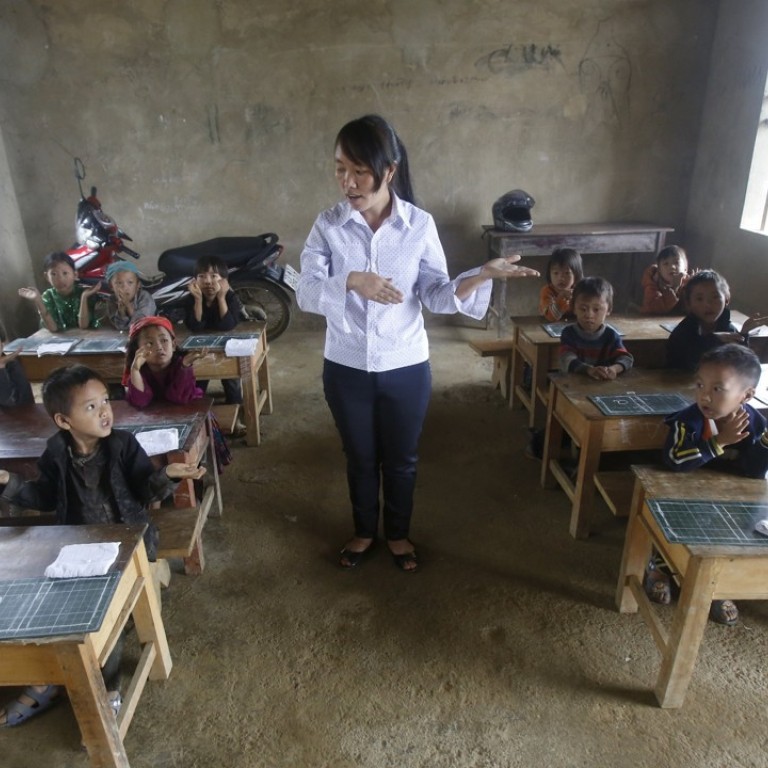
What AI revolution? First, millions of kids in the developing world need electricity and internet access
- David Dodwell says those who are excited or worried about the digital revolution need a reality check: 3.4 billion people still have no internet access today, though many of them will be needed for tomorrow’s hi-tech jobs
Gacusana’s job, with the United Nations Development Programme in the Philippines, is to bring computers to local schools, so that Philippine kids can become digitally literate, perhaps learn coding, and join the digital revolution party.
But before he can start getting excited about delivering computers to, and developing STEM skills in, the country’s classrooms, he has to wrestle with a much more basic challenge: how to get electricity for thousands of schools in the Philippines. His main task right now is getting solar panels installed in all these schools. The schools will get their computers only when the solar panels are up and running.

Gacusana was this week talking to a similarly down-to-earth crowd – a couple of hundred educators from across the Philippines gathered for an Apec workshop on harnessing “inclusive opportunities” in the digital age. Almost all of them are under mounting pressure to equip our next generation with the skills needed to take advantage of the digital revolution – and most of them feel deeply daunted by the practical challenge.
Their challenges reminded me of this year’s Asia-Pacific Economic Cooperation summit in Port Moresby. While most of the meeting venues provided us Apec visitors with robust and reasonably fast access to the internet, you did not have to stray many yards off the beaten track to enter the offline reality of most lives in Papua New Guinea. What potential here for the digital revolution, no matter what the local enthusiasm?
So before that next animated discussion about the marvellous potential of the digital revolution, artificial intelligence or big data, let us pause first for a reality check. According to the International Energy Agency, a little under 1 billion people still have no access to electricity. The World Bank says India has the world’s largest “electricity access deficit”, with 270 million people living without electricity.

Given the “electricity access deficit”, realistic internet access remains a distant dream. The World Economic Forum said two years ago that more than 4 billion people lacked internet access, and that in only 29 countries worldwide was access to the internet affordable for the entire population.
To be fair, there has been some progress since then. The latest figures now indicate 4.2 billion internet users worldwide, leaving 3.4 billion without access. Whether this access is any more affordable is unclear.
But it is only in Europe (with an internet penetration rate of 85 per cent) and North America (95 per cent) that the digital revolution is within reach. Although Asia has almost half the world’s internet users (2.06 billion), the internet penetration rate is just 49 per cent of the population. In Africa, which has a population of 1.3 billion, only 36 per cent have internet access.
In the coming decades, however much angst there is about immigration, many of the West’s future skills-needs must be met by workers educated in the developing world. If they lack the digital competencies necessary to drive internet-based economies, then the West will face ferocious human resources challenges.
Some might fear that the new AI- and robot-driven technologies will reduce the need for human labour. But that is not what labour economists at the World Bank and elsewhere have learned. Their data shows clearly that, while some jobs will without doubt disappear, the Fourth Industrial Revolution is in net terms creating more new jobs than it is destroying. The challenge is to make sure tomorrow’s workers have the skills needed to use the new technologies.
Most of these workers will be found in the developing world – so the quality of education systems there is critical. So, too, is access to electricity and the internet. Edward Gacusana is absolutely right to think about those solar panels first.
David Dodwell researches and writes about global, regional and Hong Kong challenges from a Hong Kong point of view

